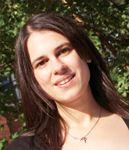Searching for the needle
It was a real pleasure to meet with some of you at the ESCRS Winter Meeting in Monte Carlo last month. The event was a great success for me; not only was I able to escape the miserable climate afforded by the typical English Winter, but I got to see some wonderful people there who, not only were a joy to meet and speak with, but who also provided me with extremely valuable feedback and support. Thank you!

One thing that is clear and still astonishes me is the astounding rate at which the ophthalmology industry is evolving. With the advent of new techniques, therapies, instruments, imaging devices, lenses, and so on, the task of selecting what is best for you, your practice and your patient, though this may sound easy enough, becomes akin to searching for the proverbial needle in a haystack – where do you start?
It is clear that the working life of today's ophthalmologist is by no means an easy one. With little time to catch up on new developments, you want to make sure that, when you do sit down to read a professional publication, it provides you with something useful which, maybe not today, but one day you would use to influence your daily clinical practice. When all's said and done, the little spare time that you do have for such activities, should not be wasted time. It is my aim to supply you with that valuable information source which, not only informs you of new, relevant developments, but also advises you on how you may incorporate these into your every day practice.
Whilst trabeculectomy remains the current gold standard of surgery for the glaucomatous patient, the technique has been marred by reports of complications and unfavourable outcomes. In this month's issue, we take a look at variations of the conventional technique, as well as the potential benefits of SLT, and how surgeons are working towards developing the ultimate surgical procedure. Elsewhere, Professor Michael O'Keefe challenges us to dispute the importance of long-term follow-up in LASIK patients, in an age where the popularity of this refractive surgery procedure has rocketed.
As always, if you have a development that you feel would benefit our audience and would like to share, please do get in touch with me and let me know. Whether you work for a large clinical practice or a small research unit, whether you're based in Spain or Serbia, I am always happy to hear from you.
Thank you and happy reading!

